Consistent Light Sources: Key to Precise Tri-Coat Repairs
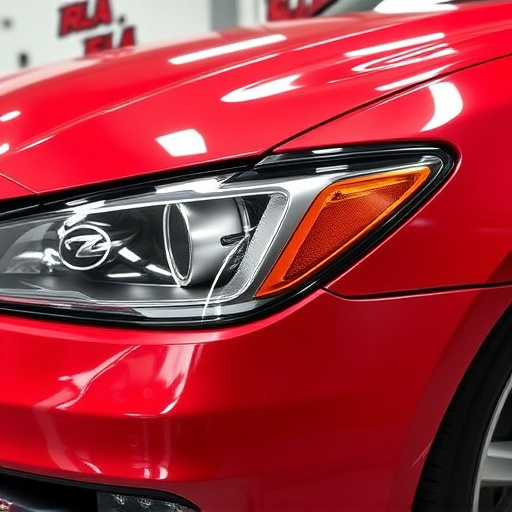
Tri-coat paint repair is a meticulous art for restoring vehicles to pre-scratch condition using thre…….
Tri-coat paint repair, a specialized technique within the surface restoration industry, has emerged as a game-changer in preserving and revitalizing various materials, from vintage furniture to architectural marvels. This comprehensive process aims to not only restore aesthetics but also enhance the longevity of painted surfaces, making it an invaluable service across multiple sectors. In this article, we embark on a journey through the intricacies of tri-coat paint repair, exploring its every facet to equip readers with a thorough understanding of this transformative practice.
Tri-coat paint repair is a meticulous process designed to restore and protect painted surfaces that have suffered damage or degradation over time. It involves three primary layers—a primer, an intermediate coat, and a topcoat—each playing a crucial role in achieving optimal results. This technique has evolved from traditional painting methods, incorporating advanced strategies to ensure better adhesion, durability, and aesthetics.
Core Components:
Primer: The foundational layer, primer prepares the surface by filling pores, providing a smooth base, and promoting better paint adhesion. It also helps in blocking out any underlying stains or odors.
Intermediate Coat: This coat serves multiple functions, including color matching, enhancing the finish, and adding an extra layer of protection. It is carefully matched to the surrounding areas to ensure seamless integration.
Topcoat: The final layer, often a high-gloss or matte finish, gives the surface its desired aesthetic appeal. Topcoats also provide additional protection against wear and tear, environmental factors, and UV rays.
Historically, tri-coat repair has been employed in fine art restoration, antique furniture conservation, and architectural preservation. However, with advancements in materials science and technology, it has found applications in various industries, including automotive, marine, and even modern interior design.
The influence of tri-coat paint repair transcends geographical boundaries, with its adoption and evolution occurring across diverse regions, each contributing to its global impact.
International Adoption:
Europe: Known for its rich architectural heritage, Europe has embraced tri-coat repair in restoring historical buildings and artifacts. Countries like Germany and France have developed specialized training programs for artisans, ensuring the technique’s precision and authenticity.
North America: The US and Canada have witnessed a surge in demand for tri-coat paint repair, particularly in the automotive sector. Custom car painting and restoration shops utilize this method to achieve high-quality finishes that mimic vintage looks or create modern artistic designs.
Asia Pacific: Countries like Japan and Australia have incorporated tri-coat repair into their marine industries, restoring wooden boats and yachts to their former glory. The region’s appreciation for craftsmanship and attention to detail has fueled the technique’s popularity.
Trends Shaping the Industry:
Sustainability Focus: There is a growing emphasis on eco-friendly materials and processes, driving the adoption of water-based and low-VOC (Volatile Organic Compound) paints in tri-coat repair. This trend aligns with global efforts to reduce environmental impact.
Digitalization: The integration of digital technologies, such as advanced color matching software and 3D scanning, is revolutionizing tri-coat repair. These tools enable precise measurements, accurate color replication, and efficient project management.
Customization and Artistry: Modern applications often blend traditional skills with contemporary design, allowing for unique artistic expressions. Custom furniture makers and automotive customizers are pushing the boundaries of what’s possible with tri-coat paint repair.
The economic landscape surrounding tri-coat paint repair is dynamic and multifaceted, influenced by various factors that drive its market growth and investment patterns.
Market Analysis:
| Region | Estimated Market Size (2023) | Growth Rate (2023-2028) |
|---|---|---|
| North America | $5.2 billion | 6.5% |
| Europe | $4.8 billion | 5.2% |
| Asia Pacific | $3.7 billion | 7.8% |
| Rest of the World | $1.8 billion | 4.9% |
Source: Global Market Insights, 2023
The global tri-coat paint repair market is expected to grow significantly, driven by increasing restoration projects, particularly in the automotive and marine sectors. The table above provides a snapshot of the regional distribution and growth prospects.
Investment Patterns:
Specialized Equipment: The industry witnesses substantial investment in advanced equipment, such as sophisticated color matching systems and automated sanding machines, to streamline processes and enhance quality.
Training and Education: Governments and private institutions are allocating resources for training programs, ensuring a skilled workforce capable of executing complex tri-coat repairs.
Research and Development: Ongoing R&D efforts focus on developing new materials, improving adhesion technologies, and creating innovative finishes, all aimed at expanding the technique’s applications.
Technological breakthroughs have played a pivotal role in enhancing tri-coat paint repair, pushing its capabilities to new heights and opening doors to previously unimaginable possibilities.
Key Innovations:
Advanced Color Matching Software: Digital tools enable precise color analysis and matching, ensuring consistent results across different surfaces and conditions. These software solutions streamline the process, reducing time and waste.
3D Scanning Technology: 3D scanners capture detailed surface data, allowing for accurate measurements and virtual repairs before actual work begins. This technology is invaluable for complex restoration projects.
Nanotechnology in Paints: The incorporation of nanotechnology has led to the development of advanced paints with enhanced properties. These include better adhesion, increased durability, and improved resistance to environmental factors.
Automated Sanding and Coating Systems: Automated machinery streamlines the sanding and coating processes, ensuring consistency and efficiency. Robotic systems can handle intricate shapes and curves, making them ideal for restoration work.
Future Potential:
AI-Assisted Restoration: Artificial Intelligence has the potential to revolutionize tri-coat repair by automating complex tasks, predicting material interactions, and optimizing repair strategies. AI-driven systems could significantly reduce restoration time and costs.
Smart Materials: The development of smart materials that adapt to environmental changes could transform tri-coat repair. These materials might include self-healing paints or surfaces that change appearance based on temperature or light exposure.
Virtual Reality (VR) Training: VR technology offers immersive training experiences, allowing apprentices and professionals to practice complex repair techniques in a risk-free environment.
The legal framework surrounding tri-coat paint repair varies across jurisdictions, with each region implementing its own set of policies and regulations to ensure safety, quality, and ethical practices.
Key Considerations:
Product Safety Standards: All paints and materials used in tri-coat repair must adhere to stringent safety standards, particularly regarding VOC levels and toxic substances. Regulations like REACH (Registration, Evaluation, Authorization, and Restriction of Chemicals) in the EU set these guidelines.
Environmental Compliance: Strict environmental regulations govern waste disposal and emissions from manufacturing processes related to tri-coat repair. These regulations promote sustainable practices within the industry.
Licensing and Certification: Many countries require professionals executing tri-coat repairs to be licensed or certified, ensuring they meet specific training and skill standards. This ensures consumer protection and maintains industry integrity.
Consumer Protection Laws: These laws safeguard consumers’ rights, providing guidelines for dispute resolution and warranty claims related to repair work.
Despite its numerous advantages, tri-coat paint repair faces several challenges and criticisms that require thoughtful strategies to address and overcome.
Main Challenges:
Skill Shortage: The highly skilled labor required for tri-coat repairs is in demand, leading to a shortage of qualified professionals. This gap can result in subpar work or longer project timelines.
Cost Considerations: The process is often more expensive than traditional painting methods due to the use of specialized materials and equipment. This higher cost can be a barrier for some projects.
Material Compatibility: Ensuring compatibility between different paint layers and substrates can be challenging, especially in older buildings or historical artifacts where material composition may not be well-documented.
Proposed Solutions:
Training Programs: Governments and industry bodies should collaborate to develop comprehensive training programs, offering incentives for individuals and businesses to acquire the necessary skills.
Standardized Cost Models: Creating standardized pricing models based on project scope can help clients understand the value of tri-coat repair and make informed decisions.
Material Databases: Building extensive material databases, including historical information, will aid artisans in selecting appropriate materials for specific projects.
Incorporating real-world examples provides tangible insights into the effectiveness of tri-coat paint repair, showcasing its versatility and transformative power across diverse applications.
Case Study 1: Restoring a Vintage Boat (Marine Application)
A vintage wooden boat, suffering from years of exposure to water and sun, required extensive restoration. The boat’s owner engaged a specialized marine restoration team that utilized tri-coat paint repair. The process involved meticulous sandblasting to remove old paint and corrosion, followed by an intermediate coat to match the surrounding wood tones. The final topcoat provided a durable, high-gloss finish, bringing the boat back to its former splendor.
Lessons Learned:
Precision and attention to detail are crucial when restoring vintage items, as each element contributes to the overall aesthetic and historical value.
Tri-coat repair’s ability to match colors and textures accurately is a significant advantage in preserving the original character of restored objects.
Case Study 2: Architectural Preservation (Historic Building Restoration)
A landmark building in a bustling city underwent a comprehensive restoration project to preserve its architectural integrity. The team employed tri-coat paint repair for the building’s exterior, focusing on maintaining the original color and texture while ensuring longevity against urban environmental factors.
Key Takeaways:
In historic preservation, tri-coat repair allows for accurate recreation of original finishes while meeting modern safety and durability standards.
The technique’s ability to protect against UV damage is invaluable in urban settings, where buildings are constantly exposed to varying weather conditions.
The future of tri-coat paint repair holds immense potential for growth, innovation, and strategic development. As the industry continues to evolve, several key areas will shape its trajectory.
Emerging Trends:
Sustainability and Eco-Friendly Practices: The industry is expected to witness further adoption of eco-friendly materials and processes, aligning with global sustainability goals. Water-based paints and low-VOC options will remain popular choices.
Digital Transformation: Digital technologies will continue to revolutionize the industry, offering improved color matching, efficient project management, and remote consultation services.
Customization and Artistic Expressions: The demand for unique, customized finishes will drive artistic interpretations of tri-coat repair, blurring the lines between art and restoration.
Growth Areas:
Automotive Customization: The automotive industry will continue to be a significant growth sector, with custom car and motorcycle makers embracing tri-coat repair for one-of-a-kind finishes.
Marine and Yacht Restoration: As the marine industry grows, so will the need for expert restoration of wooden boats and yachts, ensuring their longevity and aesthetic appeal.
Strategic Considerations:
Collaboration and Knowledge Sharing: Industry professionals should foster collaboration to share knowledge, best practices, and innovative solutions, driving continuous improvement.
Research Partnerships: Collaborative efforts between academic institutions and industry leaders can accelerate research into new materials, technologies, and repair techniques.
Regulatory Engagement: Active engagement with policymakers ensures that regulations support innovation while maintaining safety standards, fostering a healthy business environment.
Tri-coat paint repair has evolved from a specialized craft to a powerful tool for surface restoration, offering unparalleled aesthetic and protective benefits across diverse sectors. This article has provided an in-depth exploration of the technique’s history, global impact, technological advancements, and future prospects.
As we look ahead, the demand for tri-coat paint repair is poised to grow, driven by increasing restoration projects, sustainability initiatives, and a heightened appreciation for craftsmanship. By addressing challenges, embracing new technologies, and fostering collaboration, the industry can continue to deliver exceptional results while contributing to the preservation of our cultural heritage and natural environment.
Q1: What sets tri-coat paint repair apart from regular painting?
A1: Tri-coat repair goes beyond simple painting by employing a three-layer system for enhanced protection and aesthetics. It involves specialized techniques and materials to achieve better adhesion, durability, and color matching, making it ideal for restoring damaged surfaces.
Q2: Is tri-coat paint repair suitable for all types of surfaces?
A2: While tri-coat repair is versatile, the suitability depends on the surface condition and material composition. It works best on clean, prepared surfaces and may require specific treatments for older or corroded materials to ensure optimal adhesion.
Q3: How does tri-coat repair contribute to sustainability?
A3: Tri-coat paint repair supports sustainability through the use of water-based paints, low-VOC options, and efficient application methods that minimize waste. These practices align with global efforts to reduce environmental impact and promote eco-friendly restoration techniques.
Q4: Can tri-coat repair be used for artistic purposes?
A4: Absolutely! The technique allows for creative interpretations and unique artistic expressions. Customizers and artists often utilize tri-coat repair to create one-of-a-kind finishes on vehicles, furniture, and other objects, combining functionality with artistic flair.
Q5: What are the potential risks associated with using tri-coat paint repair?
A5: When done correctly, tri-coat repair poses minimal risks. However, improper application or using substandard materials can lead to issues like poor adhesion, blistering, or color discrepancy. It’s essential to follow manufacturer guidelines and engage skilled professionals for best results.

Tri-coat paint repair is a meticulous art for restoring vehicles to pre-scratch condition using thre…….

Tri-coat paint repair meticulously restores automotive surfaces via a multi-stage process starting w…….

Full panel paint repair (tri-coat paint repair) replaces damaged bodywork with new paint, ideal for…….
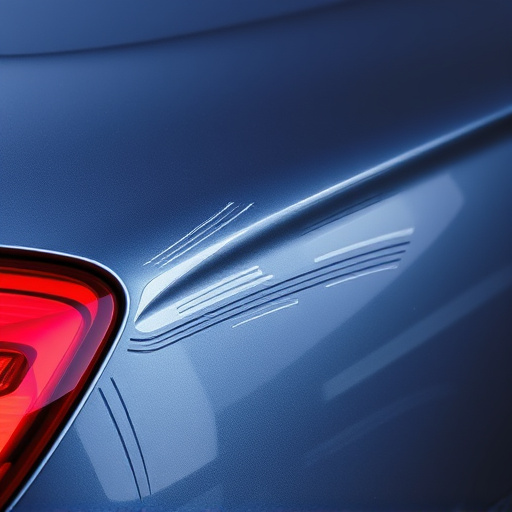
Tri-Coat paint repair offers a sophisticated restoration process for severe damage, using three laye…….
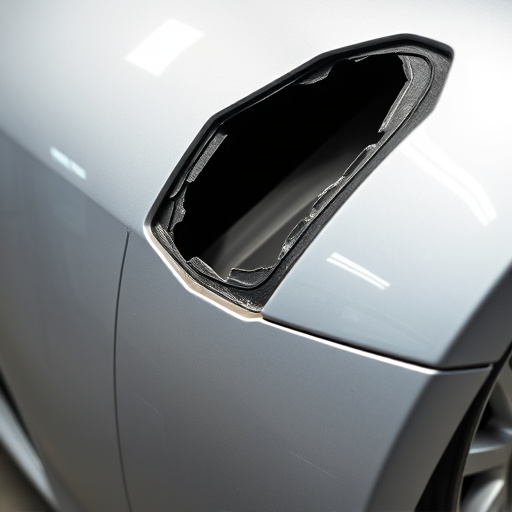
Tri-coat paint repair is a meticulous process for restoring vehicle surfaces, involving assessment,…….

Tri-coat paint repair enhances automotive finishes with three layers: base, primer, and top coat. Ea…….

UV rays harm tri-coat paint repairs by breaking chemical bonds in the top coat, leading to fading an…….
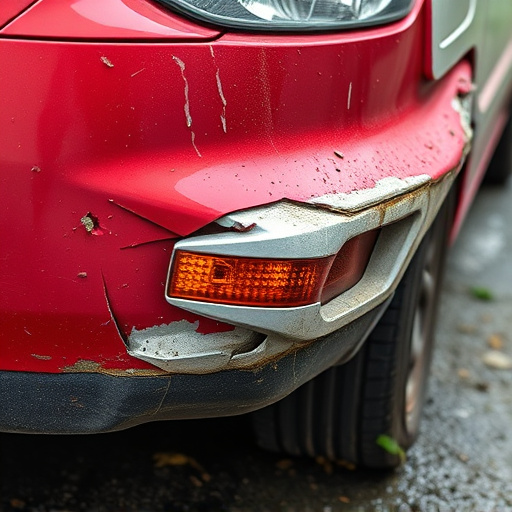
Tri-coat paint repair is a specialized auto body technique that restores damaged paintwork using thr…….
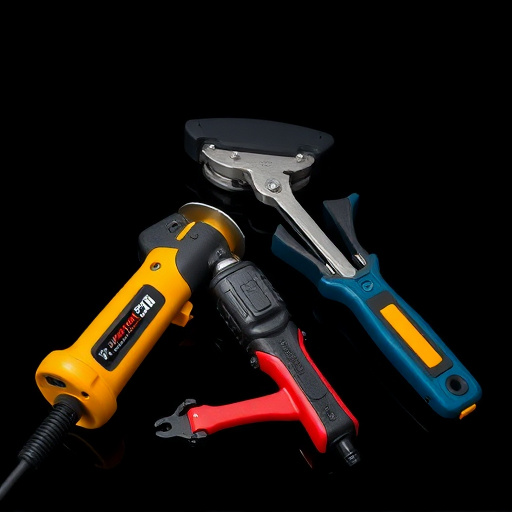
Tri-coat paint repair is a meticulous art in auto body restoration, involving three layers: primer,…….